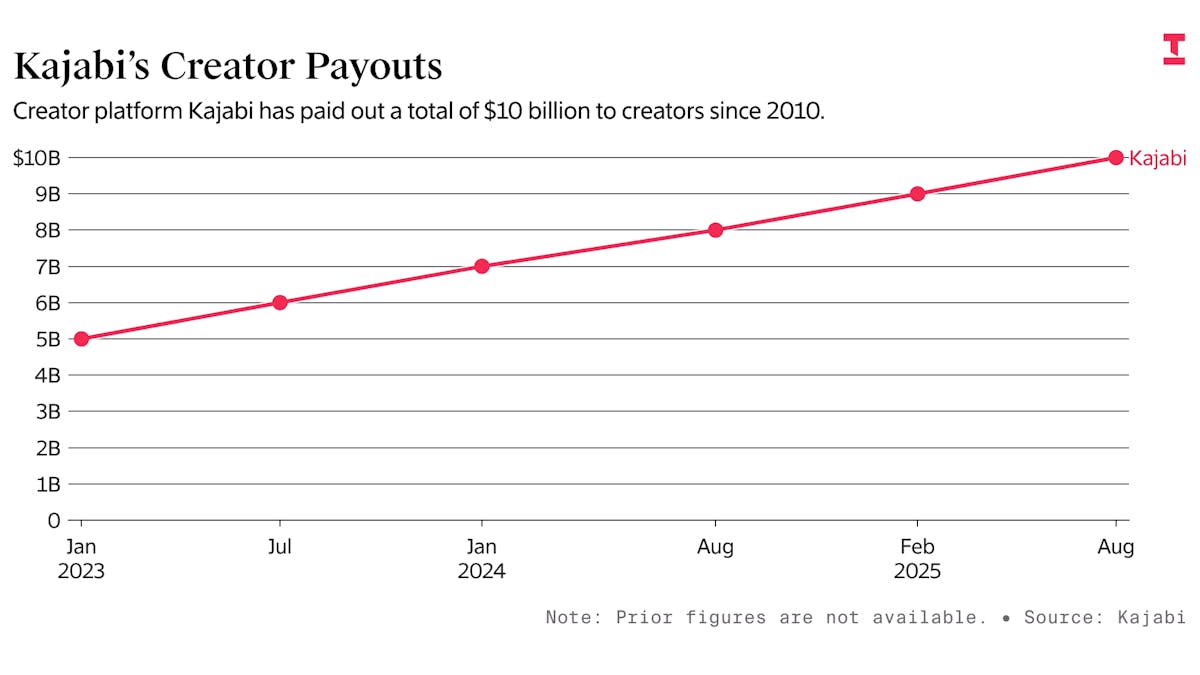Creator Economy Boom: Kajabi Processes Over $1B in Creator Revenue as Payouts Surge
Meta Description: Kajabi processed over $1B in creator revenue, with total platform earnings near $10B. Creators are moving beyond ad revenue to own their audiences and maximize earnings.
The Creator Economy's New Revenue Model
What if creators could maximize earnings without depending on unpredictable ad revenue? Kajabi, a 15 year old online course and SaaS for creators platform, just proved that direct monetization can scale. The company processed over 1 billion dollars in creator revenue through Kajabi Payments, and creators have collectively earned roughly 10 billion dollars on the platform. This milestone underscores a broader trend in the creator economy: creators choosing payment processing platforms and tools that let them own customer relationships and grow predictable revenue.
Background: From Course Platform to Creator Powerhouse
Kajabi began as a tool for selling online courses and digital products. After securing major investment from Tiger Global, the company increased marketing to creators and added product improvements focused on payments and subscriptions. Kajabi Payments became a catalyst for growth by streamlining transactions for courses, memberships, and digital product sales.
The shift is clear. Social platforms like YouTube, Instagram, and TikTok offer reach but limited control and revenue volatility. More creators are treating their audiences as customers and building businesses with subscription courses, membership sites, and direct to customer sales, supported by SaaS platforms that offer secure payment processing and recurring subscriber revenue.
Key Findings: Billion Dollar Payouts and Platform Growth
- Revenue processing power: Kajabi processed over 1 billion dollars through its payments infrastructure and reports about 10 billion dollars in total creator earnings on the platform.
- Product and marketing drivers: Tiger Global backed marketing plus Kajabi Payments and other product upgrades helped accelerate user acquisition and creator monetization.
- Creator focused infrastructure: By offering integrated payments, membership management, and digital product delivery, the platform reduces friction for creators to launch, sell, and scale.
What this means for creators
- Direct monetization wins: Subscription courses, memberships, and digital product sales allow creators to capture the full value of direct sales after platform fees, improving lifetime value and predictability.
- Business skills matter: To succeed on platforms like Kajabi creators must also master marketing, customer support, pricing strategy, and product development.
- Choose the right tools: Evaluate the best payment platforms for creators, secure payment processing for digital creators, and SaaS tools that help you automate your course payments and streamline creator payouts.
Industry Impact
Kajabi’s growth reflects wider creator economy trends such as the rise of micro and niche creators, platform diversification, and demand for integrated monetization tools. Brands and creators are prioritizing long term audience building over one off viral hits. Service providers that emphasize ease of use, automation, analytics, and multi platform payouts are well positioned to win.
Actionable takeaways
- Streamline creator payouts by choosing platforms with built in payment processing and recurring billing.
- Maximize your earnings by offering subscription based courses and bundled digital products to increase recurring subscriber revenue.
- Own your audience by collecting customer data and selling direct to customer instead of relying solely on ad revenue or platform algorithms.
Conclusion: The future favors creator owned revenue streams
Kajabi’s billion dollar processing milestone validates a new paradigm: creators who treat content as a business and adopt creator aligned SaaS tools can build sustainable income streams. For creators and small businesses the strategic choice is clear: use platforms and payment solutions that help you automate sales, scale revenue, and own your customer relationships rather than depending on shifting algorithmic visibility.




